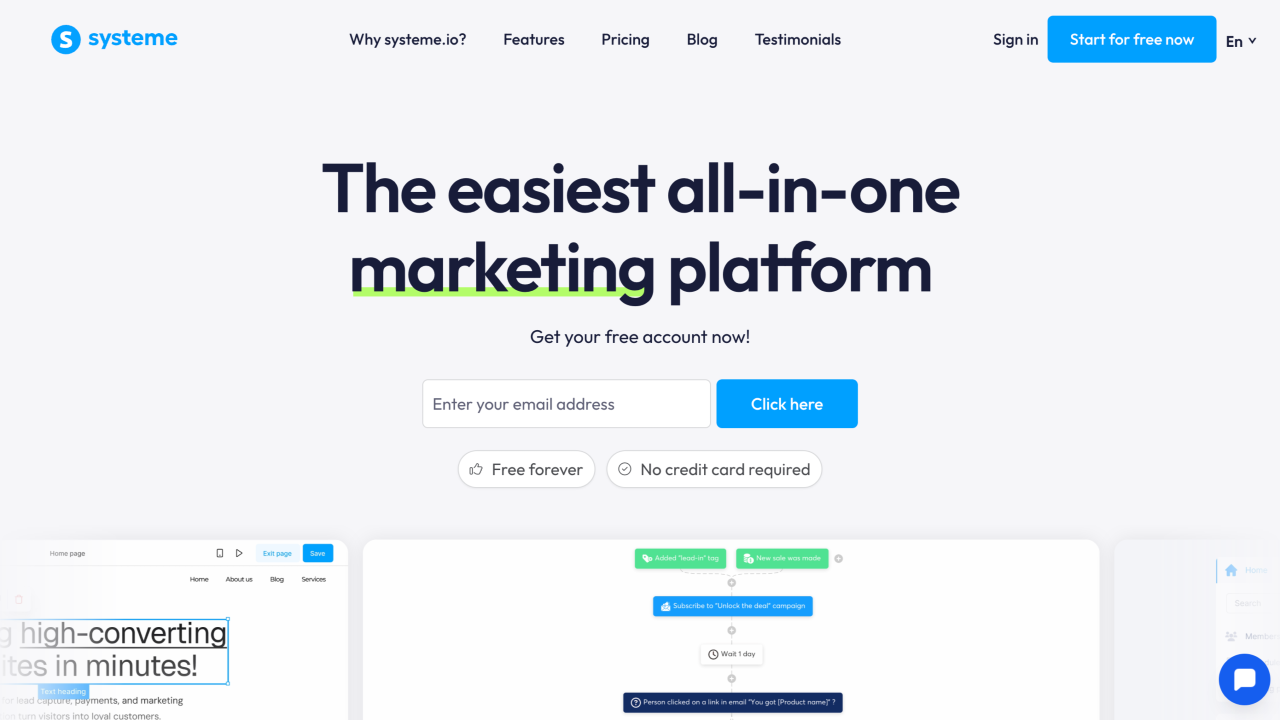Even experienced marketers can struggle to know what works in email campaigns. Open rates, clicks, and conversions aren’t guesswork — they’re data-driven decisions. A/B testing allows you to experiment systematically, learn from your audience, and optimize campaigns for maximum impact.
Advanced platforms like ActiveCampaign, Brevo, Omnisend and Systeme.io make it possible to test multiple variables at scale, but understanding what to test, how to interpret results, and how to implement changes is critical for improving performance.
Why A/B Testing Matters
A/B testing, or split testing, involves sending two (or more) variations of an email to different segments of your audience to see which performs better. Without testing, campaigns rely on assumptions, which can waste time, resources, and opportunities.
Proper A/B testing allows you to:
-
Increase open rates by optimizing subject lines.
-
Improve click-through rates by testing CTAs and layout.
-
Boost conversions through better timing, content, and personalization.
In short, testing turns your email marketing from a shot in the dark into a predictable, revenue-generating system.
Step 1: Decide What to Test
There are several variables you can experiment with:
-
Subject Lines: Test tone, length, personalization, and urgency.
- Example: “Your 20% Discount Awaits” vs. “Don’t Miss Your Exclusive 20% Offer.”
-
Email Copy & Layout: Compare long-form vs. short-form emails, or different paragraph structures and bullet points.
-
Call-to-Action (CTA): Test button color, text, placement, and phrasing.
- Example: “Shop Now” vs. “Grab Your Deal.”
-
Timing & Day of Send: Experiment with morning vs. evening, weekdays vs. weekends.
-
Segmentation & Personalization: Test sending the same content to a broad list vs. a highly segmented audience.
Practical Tip: Only test one variable at a time per campaign to ensure you can isolate what drives results.
Step 2: Set Up the Test in Your Platform
Most advanced platforms have built-in A/B testing features:
-
ActiveCampaign: Supports multi-condition split tests, allowing you to test subject lines, content, and automation triggers simultaneously.
-
Brevo: Lets you easily test subject lines, sender names, and email content with clear reporting dashboards.
-
Systeme.io: Offers testing for email funnels and sequences to optimize performance across multiple steps.
Actionable Tip: Set your sample size large enough to yield statistically meaningful results — small lists can give misleading insights.
Step 3: Monitor Key Metrics
Focus on metrics that align with your goal:
-
Open Rate: Measures the effectiveness of subject lines and preview text.
-
Click-Through Rate: Shows engagement with the content and CTA placement.
-
Conversion Rate: Indicates whether the email drives the desired action, like purchases or sign-ups.
-
Bounce Rate & Spam Reports: Ensure your test emails maintain deliverability.
Pro Tip: Don’t judge results too quickly. Allow enough time for recipients to open and interact with emails before drawing conclusions.
Step 4: Analyze and Apply Results
Once your test concludes, compare the variants:
-
Identify the winner based on your primary metric (open, click, or conversion).
-
Implement the successful variant in your regular campaigns.
-
Document learnings for future campaigns.
-
Consider testing another variable in the next sequence.
Example: Testing subject lines might reveal that adding personalization increases open rates by 15%. In your next sequence, incorporate personalization consistently and test CTA wording next.
Step 5: Continuously Optimize
A/B testing is ongoing, not one-off. Customer behavior, industry trends, and seasonality all affect engagement. Build a routine:
-
Run at least one test per major campaign.
-
Review monthly performance reports.
-
Iterate on high-performing sequences to maximize ROI.
Advanced users can also explore multi-variate testing, testing multiple variables simultaneously, but ensure your platform and audience size can support reliable results.
Bringing It Together
Effective A/B testing and optimization turn email marketing into a continuous improvement engine. By systematically testing subject lines, content, CTAs, timing, and segmentation, you gain actionable insights that increase open rates, clicks, and conversions.
Tools like ActiveCampaign, Brevo, and Systeme.io give you the flexibility to test across complex sequences, automate optimizations, and scale campaigns efficiently. The key is to test, learn, and iterate — each small improvement compounds into significant results over time.
Next Step: Explore our directory to compare these platforms and see example testing workflows that can help you get started today.






